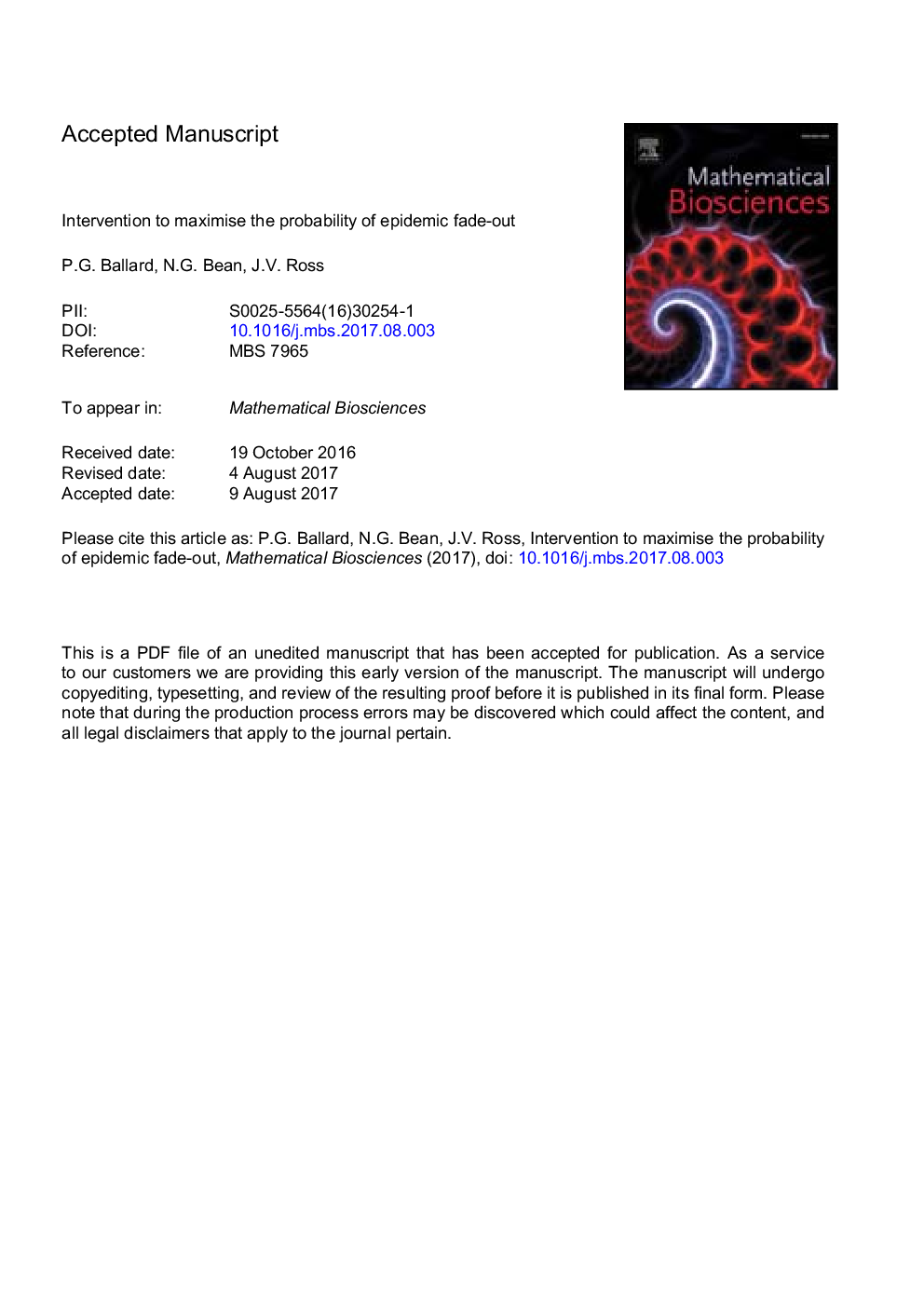| Article ID | Journal | Published Year | Pages | File Type |
|---|---|---|---|---|
| 5760373 | Mathematical Biosciences | 2017 | 26 Pages |
Abstract
The emergence of a new strain of a disease, or the introduction of an existing strain to a naive population, can give rise to an epidemic. We consider how to maximise the probability of epidemic fade-out - that is, disease elimination in the trough between the first and second waves of infection - in the Markovian SIR-with-demography epidemic model. We assume we have an intervention at our disposal that results in a lowering of the transmission rate parameter, β, and that an epidemic has commenced. We determine the optimal stage during the epidemic in which to implement this intervention. This may be determined using Markov decision theory, but this is not always practical, in particular if the population size is large. Hence, we also derive a formula that gives an almost optimal solution, based upon the approximate deterministic behaviour of the model. This formula is explicit, simple, and, perhaps surprisingly, independent of β and the effectiveness of the intervention. We demonstrate that this policy can give a substantial increase in the probability of epidemic fade-out, and we also show that it is relatively robust to a less than ideal implementation.
Related Topics
Life Sciences
Agricultural and Biological Sciences
Agricultural and Biological Sciences (General)
Authors
P.G. Ballard, N.G. Bean, J.V. Ross,
